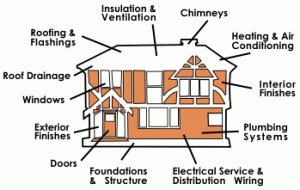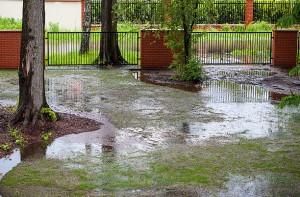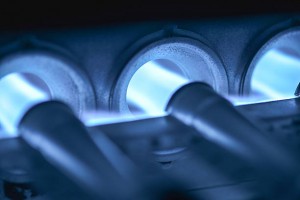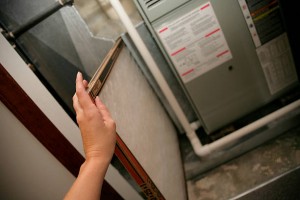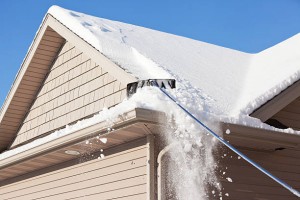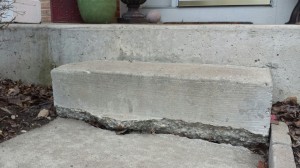Home Inspections Can Help Current Home Owners Save Money
How long has it been since you had a professional home inspection for your home? If the answer is years, or never, a professional home inspection should be at the top of your to-do list.
A home inspection is essential for anyone buying a home, but current home owners will benefit from having one as well.
Chances are you have lived in your home long enough for changes to take place to all of its components. A home inspection can help you find and address a problem before it leads to damage or costly repairs.
Would you like an unbiased opinion about the condition of your roof, siding, furnace, air-conditioning, chimney, etc? A home inspector will evaluate the elements of your home from a purely objective point of view. He or she draws no benefit from finding defects – or the lack thereof – and therefore is a more reliable source of information than someone who is paid to do repair work. Not only that, a home inspector evaluates all of a home’s components, all in one visit. Think of it as a physical check-up for your home.
For example, do you know how well your roof or siding are holding up to snow and extreme temperatures? Are there any signs of leaks, mold, or structural damage throughout your home? Have any contractors done work in your home since you bought it, and was that work performed correctly? Is your furnace operating inefficiently or, worse, leaking dangerous carbon monoxide into the air? Could replacing an aging water heater be all that is needed to prevent thousands of dollars in costly water damage?
These are only some of the issues that overwhelm home owners. Having a home inspection can help you properly maintain your home, as well as identify potential problem areas before they deteriorate and become costly.
REMEMBER: If we perform a home inspection for you our expertise is available to you for as long as you own your home. We will happily answer any questions you may have.
Spring Cleaning – Get Ready for Rain
It’s a beautiful day here in Chicago! A great chance to open up some windows and begin a little Spring cleaning. Removing dirt and debris from window tracks and away from weep holes will ensure that your windows drain well when heavy rains come. An old toothbrush works well for getting dirt out of the tight corners. It’s also a good chance to finally let a little fresh air into the house to clear out indoor air pollution that may have built up in the stagnant winter air. Enjoy the sunshine and mild weather this week!
Avoid Flood Damage with a Few Simple Home Repairs
Spring has arrived in the Chicago area, and while it is a welcome sight, it brings with it wildly fluctuating weather conditions. As rains soak the city and surrounding suburbs, homeowners everywhere may find themselves battling flooding situations. Even if your home is situated a safe distance from a body of water, you can still suffer the effects of torrential rains, as saturated or still-frozen soil allows the water to seep around foundations, into basements and crawlspaces. Therefore, we are touching on many water-related home maintenance issues. Water damage happens so easily, is very exhausting to clean, and can be terribly costly to repair, so we want to keep you well informed about protecting your home.
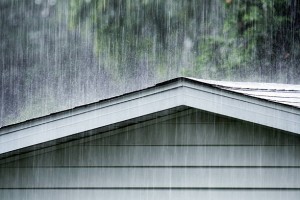
In addition to maintaining gutter systems, as described in a previous article, maintaining an appropriate grade around your home is equally important. Properly functioning gutters work in conjunction with proper grading around a house. The gutter’s purpose is to effectively divert water away from the foundation, but many homes will have developed a negative grade around the foundation due to settling of the soil. If water is draining from a roof into an area of negative grade, it will pool around the home’s foundation and quickly enter any cracks or windows in that area, draining into the adjacent area of the home. If you notice settling around your home, don’t be alarmed; it is a very normal occurrence and can easily be remedied.
Settling occurs as back-filled soil sinks around the new foundation, and usually happens within five to seven years after a home is built. Over time, the displaced soil settles into the air pockets around the homes foundation, causing a negative slope toward the home instead of away from it. Correcting the problem is easy, as you simply need to have additional soil added to areas of negative grade around the foundation. It is a simple solution, but not a labor-free one, so while you could certainly apply soil to the needed areas yourself, you might want to enlist the services of a local landscaper or nursery to do the job for you.
Whether you choose to complete the work yourself or hire someone, make sure that the process follows these guidelines:
- Landscaping may obscure a settling problem and may need to be removed in order to properly back-fill and correct the grading.
- The settled area should be back-filled with a heavy clay-based soil — not mulch, stone, sand, etc.
- The grade around a foundation should start six to eight inches below the siding and/or below the sill plate on the foundation.
- Grade the new material so that it is pitched at one or two inches per linear foot away from the house.
- Sometimes a high soil level can make it difficult to achieve this grade, and in these cases a swale may be added between seven to ten feet away from the house to divert water away from the foundation. French drains may also be installed to help divert water away from the house.
Hopefully this information will help you keep your home water-tight this season. If you have any questions, don’t hesitate to ask. And don’t forget, Home Inspections aren’t just for buyers or sellers – It’s always a good idea to have the condition of your home evaluated by an unbiased professional. If you would like a thorough evaluation of your current home’s maintenance needs, just contact us to schedule a Maintenance Check-Up Inspection!
When it Comes to Finding the Right Inspector, Experience is Key
Have you recently decided to purchase a home? Are you looking for a great inspector to make sure your investment is a worthwhile endeavor? It’s likely you’ve been told by your realtor, friends, or family to make sure you have a home inspection performed. And certainly we at INSPECT, INC. would tell you that you need look no further, you can rest assured that we are a sound choice. But how do you, the consumer, ultimately choose a home inspector that you trust is reliable, and what attributes make a great one?
You don’t want to follow someone’s recommendation or hire a mutual friend only to find that he or she missed an important defect in your home. While there are many important qualities in an inspector, such as professional affiliations and continuing education, the number one factor guiding your inspector search should be experience level – specifically the number of years that the inspector has been an active home inspector and the number of inspections he or she has personally performed. The number of inspections should reach well into the thousands, preferably around 5,000 or more, and with that many inspections in their history, it is likely an experienced inspector will have been actively inspecting for a decade or longer. Sufficient experience is the one characteristic of your home inspector that you must insist on, otherwise there is no point paying for a professional inspection!
The single most effective way for an inspector to develop their essential skills is through experience in the field. Classroom exercises can only teach the basic flow of a home inspection and usually involve following a simple check-list through a home. While this education is essential to building a good foundation, it is the many yea rs of hands-on experience which teaches an inspector where problem spots occur and how to quickly identify them. Certain building styles have common defects, and homes built in different eras have unique building materials that are prone to specific problems. Having a truly qualified inspector can mean the difference between a dream-come-true and disaster: The discovery (or lack thereof) of defects, unbiased disclosure, and a clear understanding of all the home’s components are all essential to making a sound investment.
rs of hands-on experience which teaches an inspector where problem spots occur and how to quickly identify them. Certain building styles have common defects, and homes built in different eras have unique building materials that are prone to specific problems. Having a truly qualified inspector can mean the difference between a dream-come-true and disaster: The discovery (or lack thereof) of defects, unbiased disclosure, and a clear understanding of all the home’s components are all essential to making a sound investment.
Buying a home is likely the single biggest investment you will make in your lifetime. Making sure it is safe for you and your family is the most important reason for having a home inspection. Michael Doetsch, owner of INSPECT, INC has personally performed more than 11,000 inspections over the past 25 years. You can rest assured that INSPECT, INC. is a team of home inspectors with extensive experience who are at the top of their field, and we will provide you with the information you need to make an educated decision about your investment.
Do you need a Home Inspection for a newly constructed home?
 Why a home inspection is essential for new construction
Why a home inspection is essential for new construction
If you’re building a new home, a home inspection might not be on the top of your to-do list. But if you forego this inspection it could cost you thousands of dollars in the long run. Here, we explain why a home inspection is one of the most important elements of new construction.
Why should I have a home inspection performed on a newly constructed home when the house is built to code and inspected and approved by the building department?
- Building codes themselves are the bare minimum required to make a home safe for occupancy.
- Municipal inspections usually only last 20-30 minutes, which is evidence that they are nowhere near as thorough as a private home inspection by Inspect, Inc. When you hire Inspect, you can expect us to perform an exhaustive inspection of your home and be on site for 2 hours or more depending on the size of the property being inspected.
- A municipal inspection looks at the completed project, but does not test the operation of the built-in fixtures and appliances attached to the utilities.
- The utilities are not turned on until all have been signed off by the municipal inspector. Therefore, these components – such as gas, water, and electricity – are not actually inspected for proper function by the building department. The best time to check the operation of these functional components is during a home inspection, after the utilities have been activated.
- The best time to inspect a newly constructed home is when it is brand new, while the builder’s warranty is still in effect.
Some of the items that Inspect, Inc. will examine, which are often bypassed in new-construction inspections:
- Examine the operational flow of water, and check for proper installation of plumbing fixtures and faucets. We look for loose or leaking connections. Faucets are turned on and drains are tested for leaks. These items are not covered by a municipal inspection.
- Inspect for gas leaks at piping and appliances.
- Check for the correct polarity, proper grounding, and operation of GFCI and AFCI faults in the electrical system.
- Inspect the function of all built-in appliances, including garbage disposals, dishwashers, ovens, ranges, cook tops, ceiling fans, exhaust fans, and garage door openers – all of which are not examined by municipal inspectors.
- Enter attics and crawl spaces, checking for proper ventilation and insulation value.
- Walk on roof to check for the proper installation of shingles, flashings, vents, etc. Check for any damaged or missing roofing components, weather permitting.
- Check for proper operation and installation of the heating and cooling systems, operation of the water heater(s), and evaluation of fireplace(s).
 We understand that all new homes have some defects, usually minor, but potentially costly. Having us perform a home inspection on your new home gives you the best opportunity to take advantage of the builder’s warranty as well as learn what to expect in the future as the home settles into its new foundation. By not having a professional home inspection you may be putting yourself at risk for underlying problems that surface in the future.
We understand that all new homes have some defects, usually minor, but potentially costly. Having us perform a home inspection on your new home gives you the best opportunity to take advantage of the builder’s warranty as well as learn what to expect in the future as the home settles into its new foundation. By not having a professional home inspection you may be putting yourself at risk for underlying problems that surface in the future.
Prevent Flooding: Maintain Gutters For Rain, Sleet, and Snow
It’s that time of year again. Winter has descended on the Chicago area bringing snow, sleet, and rain. While it seems that the icy blast will never leave us, tomorrow is the Winter Solstice, bringing longer, sunnier days. Before we know it Spring will be upon us, and any melting ice and snow will begin putting roof and gutter systems to the test.
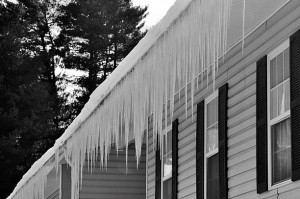
Long heavy icicles posing an ice damage risk to the burdened eaves of a building after a severe winter storm.
One of the most important issues at this time of year, with storms regularly moving into the area, is to ensure that gutters and downspouts are functioning properly. Gutters are the front line of defense against water damage. They are extremely important for keeping a basement, crawl space, or lower level of a home dry, as failure to divert roof runoff may result in moisture in one of these areas. As soon as it is safe to do so, make sure that dirt and debris are removed from gutters so that melting snow and rainwater can flow freely. Even homes with gutter guards are not maintenance-free; many of these guards don’t work dependably and still need to be removed and cleaned to remove the debris that builds up behind the guard. Gutters that are damaged or sagging are equally problematic, since water will quickly follow the easiest route in its path and spill over an uneven edge. Overall, blocked or sagging gutters are worse than no gutters at all, as large amounts of water will build up and drain over one area onto the ground, rather than draining evenly over the length of a roof edge.
Debris-free gutters often do their job just fine, but if you find that water still drains over roof edges during heavy rains, consider installing commercial grade downspouts. These downspouts are larger in diameter and can handle almost twice as much water as traditional downspouts, therefore allowing heavy rains to quickly drain from the roof. More importantly, consider redesigning where your gutter downspouts are emptying water runoff. Gutters may be operating perfectly, but if the downspout is directing runoff into an area adjacent to your home, the water can easily accumulate against your foundation and find its way into the house. Fortunately this is an easy fix. Downspout extensions can be purchased at any home improvement center, and are easily installed. They should divert water a minimum of five to seven feet away from the foundation. If you find that they are unsightly, or impeding a walkway, you can opt to install an underground extension made of corrugated plastic, with a pop-up emitter attached at its end. This option allows you to direct the water away from your home to a destination of your choosing, whether it be a rain garden, a nearby drain, or the street.
If your gutter system is in good shape, then you are already set to go. If you do need to make improvements, don’t despair. A little bit of maintenance goes a long way in this case, and will allow for peace of mind when the first Spring rainstorm rolls into town.
Heat Your Home: Keep Your Furnace Working in Cold Winter Weather
 The onset of subzero temperatures brings us an influx of phone calls regarding problems with furnaces. As temperatures drop, we begin to demand increasingly more from our furnaces, but unfortunately many aren’t up to the challenge. Since we still have several months of cold weather ahead, this is still a good time to make sure that your heating system is in good working condition and prepared for the workload ahead. (Much of the following information can be addressed by a licensed HVAC technician; however, if you wish to have more than just your heating system evaluated, our Maintenance Check-up is an excellent idea).
The onset of subzero temperatures brings us an influx of phone calls regarding problems with furnaces. As temperatures drop, we begin to demand increasingly more from our furnaces, but unfortunately many aren’t up to the challenge. Since we still have several months of cold weather ahead, this is still a good time to make sure that your heating system is in good working condition and prepared for the workload ahead. (Much of the following information can be addressed by a licensed HVAC technician; however, if you wish to have more than just your heating system evaluated, our Maintenance Check-up is an excellent idea).
For most of us, regular care of a furnace isn’t a top priority – until it stops working. The first step in ensuring that that doesn’t happen is to find out when the unit was last serviced. Was it done recently? If not, the blower and inducing motors may need servicing. These components can become dirty, work themselves loose, or the bearings can deteriorate. Listen to the furnace while it is running; you can often detect odd noises that might indicate whether one of these situations is developing. Fixing a problem in its early stages can save your furnace, not to mention your wallet.
Another key component of your furnace is the filter, which removes excess particles from the air as it enters the unit. It is generally recommended to change your filter once a month, especially in summer and winter when the blower is working excessively. There are different types of filters on the market, including high-allergen filters (often listed as MERV 9 or above); however, we do not recommend the allergen filters because they are so thick that they can place excess strain on the furnace. Instead, we recommend the more inexpensive filters with a lower MERV rating, replaced a bit more frequently.
With freezing temperatures comes dry air. Our humidifiers are therefore working on overdrive as well. Humidifier pads can develop calcium build-up from water sources, which blocks the flow of water and diverts it to areas it shouldn’t be going. A common example is when humidifier water is diverted into the furnace itself, causing rust, damage, and eventual furnace failure. If you haven’t changed the pad in a while, inspect the area around the furnace. Look for water dripping under the humidifier or onto the furnace; these are signs that the unit is blocked and water is being misdirected. A general guideline to follow is to change your humidifier pad once each year, so if you haven’t changed it yet, now is a good time. It is easy to do, but you can have an HVAC technician do it, especially if you have one coming out for general servicing already.
Changing your own furnace filter and humidifier pad is relatively easy, and you can find both at most Big Box and hardware stores. Look for the name and model number on the side of your furnace unit, so you can purchase the appropriate size filter and pad. If you can’t find this information, you can pull the cover off of the humidifier and measure the pad, or simply take a few pictures that you can show to a salesperson at the store. The furnace filter location depends on the model, and can be a bit more difficult to find. It may be located on the side, bottom, or top of the unit, either easily accessible on the outside, or inside the unit where it is difficult to access. However, they should generally be located in the area where the return air duct connects with the main furnace unit. A professional technician can show you where your particular components are located. But, if we have performed an inspection on your home in the past, you can luckily call us for help!
Again, an HVAC technician can do all of these things for you, and this regular check-up should be done on an annual basis. An added benefit to hiring a professional is that, if you have a company come out to service the system every year, when a problem does come up (like your furnace shutting down on a below-zero night!) you’ll likely be near the top of their priority list versus a new client calling for the first time.
Lastly, if you have other concerns about your home in addition to your heating system, our Maintenance Check-up is an excellent service to provide you with peace of mind. The Check-up is identical to a pre-sale home inspection, providing you with an objective and utterly thorough analysis of all of your home’s systems – areas such as the roof, plumbing, electrical system, foundation, and everything in-between, including the furnace.
To read more about our Maintenance Check-up, click here.
Be on the lookout for flooding and leaks.
While we’re all enjoying the fabulous weather warm-up, it creates the perfect scenario for water damage around your home. All of that snow is melting quickly under the warm April sun, and snowdrifts act as dams by keeping the water pooled around outside foundation walls.
Water damage is expensive! Here are some suggestions to avoid potential problems:
- If needed, clear areas of remaining snow away from the outside of your home to create a pathway for pooled water to drain away properly. In spring, it may be necessary to readjust the grade around your home so that water drains away instead of collecting near the foundation.
- Check basements and crawlspaces to see if any water is leaking in through cracks in the foundation.
- Window wells can become tanks of water if snow-melt trickles in along the side of the house. Water can leak in quickly from these points!
- Make sure sump pumps are working properly and battery backups are functioning and ready to go.
- Clear leaf litter and debris from floor drains so that water can drain away quickly.
- If you have a sewer drain in the neighborhood near your home, check to see that it is clear of snow and leaves. The water draining from several yards can quickly turn into a small lake, and without adequate drainage it may begin to approach your home.
Inspect, Inc. Celebrates 40 years!
Inspect, Inc. is thrilled to celebrate over 30 years of success in the Chicago area! Our company has always been a family-oriented, privately-owned business dedicated to providing excellent service through personal relationships. The company was founded in July, 1983 by Dave Mahnke and his wife Gay who, through hard work and dedication, built Inspect, Inc. into a respected leader in the home inspection industry. After Dave’s unfortunate passing in 2002, the company was proudly taken over by long-time INSPECT employee Bill Hahn and his wife Anita, who brought their own dedication and expertise to daily operations. When the Hahns were ready for retirement in 2008, INSPECT, INC. again passed to another long-standing employee, Mike Doetsch who, like Bill Hahn, has had the pleasure of working in the company since the Mahnkes stood as owners. Mike and his wife, Cindy, maintain the company’s dedication to providing honest, objective, expert home inspections. Today, INSPECT, INC. continues to operate as it always has – with excellence, with integrity, and with genuine care for our clients. We are lucky to have had the pleasure of working with so many home-owners and real estate professionals from all over the Chicago area, and we are proud to have played a part in the immense growth that has taken place in the real estate market over the past three decades. We will enjoy building relationships with new clients, as so many of you have become both friends and colleagues to us. Each and every one of you is part of the reason INSPECT, INC. has been thriving for over 40 years, and we look forward to working side by side for many years to come!
Chipmunks – Damage Underground
With Spring comes the welcome return of the great outdoors. Robins are back, grills are being fired up, and neighbors are once again active up and down the street. Unfortunately one other little neighbor is coming out of hibernation as well – chipmunks.
The fuzzy little critters have been captured in Disney movies and cartoons for years, and they are often fun to watch as they scurry around the yard in hot pursuit of each other. But many homeowners can tell you that they bring more harm than good to your backyard Eden.
Chipmunks are voracious eaters, attacking bulbs and seedlings and ravaging bird feeders until they hang empty. More serious destruction can happen around the foundation of your home. As chipmunks burrow to establish their underground pathways, they loosen and remove foundation materials underneath service walks and front stoops. As seen in this photo, when enough material is removed, the void created beneath structures can cause sagging and eventual collapse. So, while chipmunks can be a definite nuisance around your landscape, they turn downright damaging and costly when they start to affect your home. Gravel foundations for walks and steps can be surrounded by wire fencing in order to prevent rodents from burrowing through the material.
The best prevention is to simply be aware of the conditions around your home and watch for any new or increasing chipmunk activity. That way, while many homeowners are able to tolerate a certain amount of activity around their home, a severe problem can be caught in the early stages before it results in costly damage.

